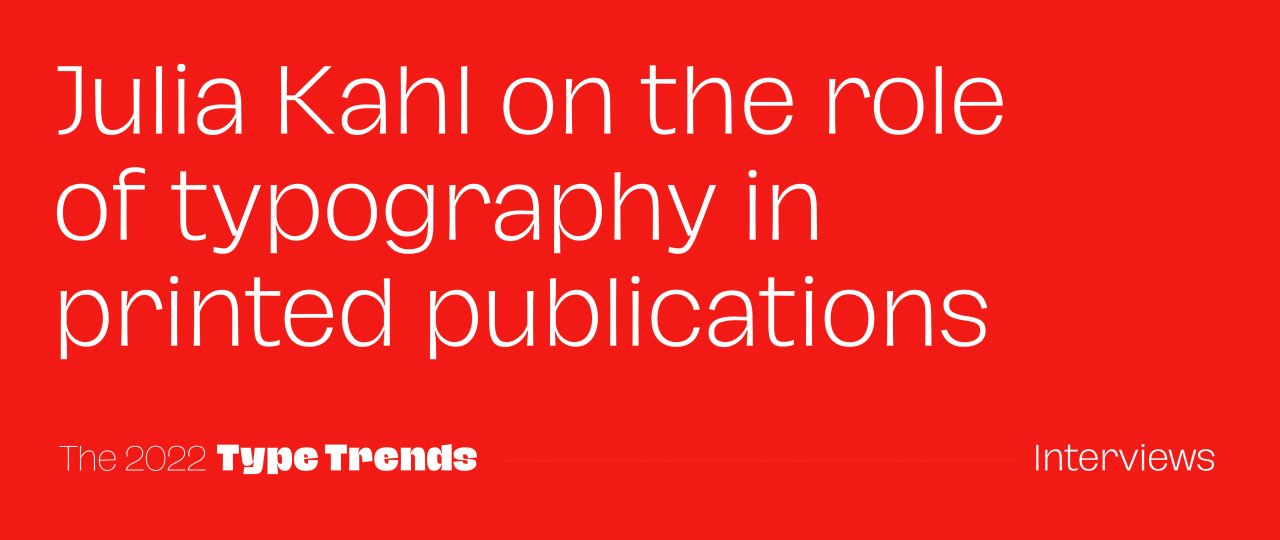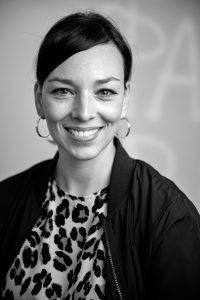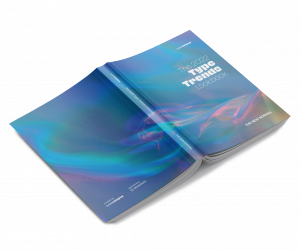Interview with Julia Kahl
this blog post is typeset in blacker font family
Julia Kahl (born 1983) studied Communication Design at the University of Applied Sciences Darmstadt before moving to Karlsruhe in 2007, where she now lives and works. Together with Lars Harmsen, she runs the independent publishing and media house Slanted Publishers, which was founded in 2014 and has received international recognition for its activities such as Slanted magazine, the Slanted blog and various publications in the field of typography and design. As a designer, editor and publisher, she has a great passion for typography, editorial design and all things print and loves connecting with people and cultures from all over the world. She teaches in the field of typography/editorial design at various universities and is regularly part of international design juries.
www.slanted.de
@slanted_publishers
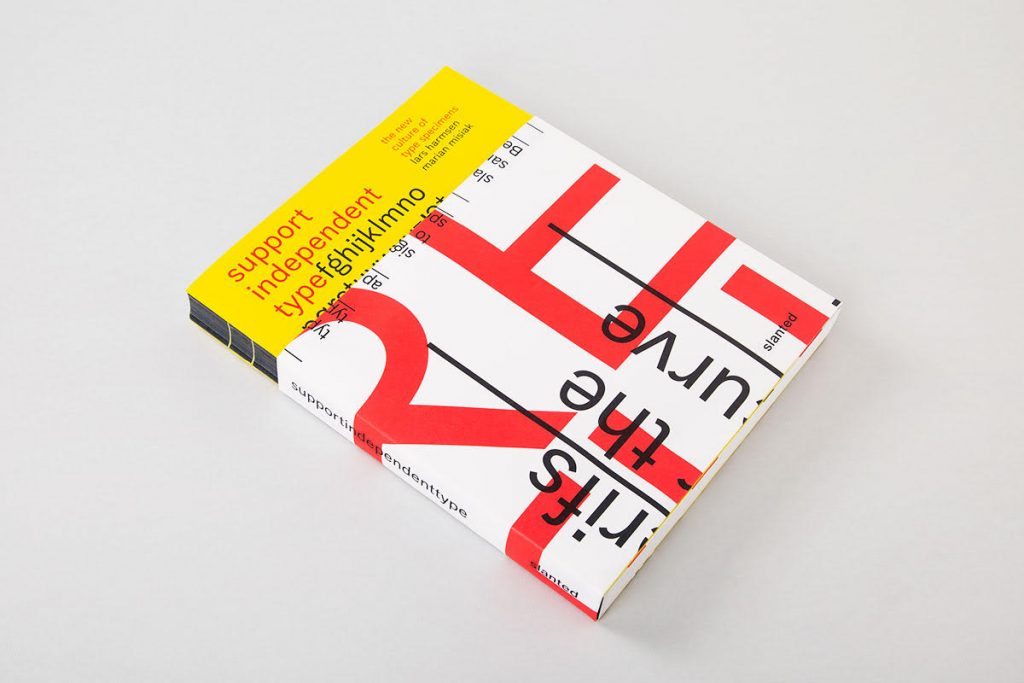
For many years in Slanted you have been exploring the sense of place traveling around the world meeting designers, dedicating each issue to a specific city. Can we still speak of global and local design culture in the age of the pandemic?
Yes, absolutely, and I even think that in the long run the pandemic will lead to even becoming more aware of a local design culture again.
I think it’s essential to distinguish here between the opportunities for global access and exchange that have emerged in recent years and the prevailing culture and history locally, which is no less important just because you have the opportunity to think outside the box. The fact that for each issue devoted to a particular city we also visit it and meet on the ground those who significantly shape the cultural landscape is an essential part of our work and opens up insights into that very culture that cannot be found via the World Wide Web. The Internet reflects only one facet.
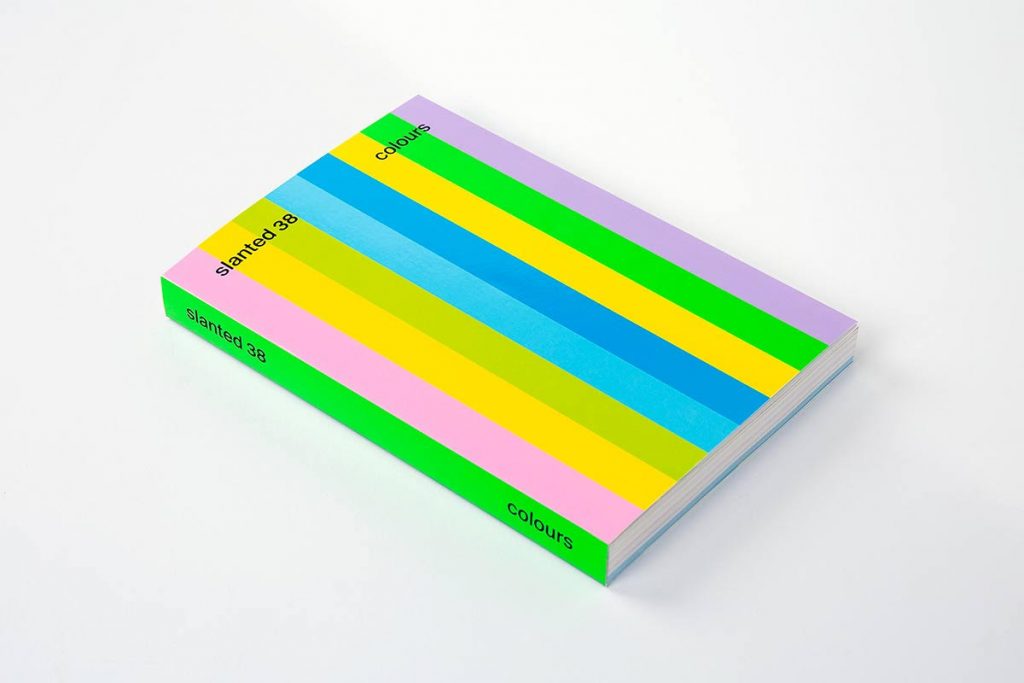
With design magazines everywhere switching to digital, Slanted keeps its soul rooted into the printed version. What motivates you in this belief of the physical object over the digital one?
We launched the online platform in 2004 and only published the first print edition afterwards in 2005. The reason then, as now, was that typography needs paper to unfold its full beauty. That with the magazine, we are countering the blog with a medium that slows down our constant desire for “higher, faster, further” and gives the mind the space it needs to pause and consciously consume. All senses are addressed by the high-quality produced magazine, which – unlike many other magazines – is read by several people and above all archived and not thrown away. The Slanted magazine is a collector’s item, published only two times a year. We use our channels very consciously and are convinced that a print magazine is not the right medium to process time-sensitive information – it’s what our online channels are for, where we inform our community on a daily basis. And the current development of our publishing house, with one or two new publications per month, only confirms our feeling that the market for print publications with good, sustainable content and an outstanding production is rather getting bigger.

Can you name 10 typefaces created in 2021 that you see as capturing the zeitgeist and representing the way design culture is evolving
today?
I have the impression that there is currently a very pronounced trend in which expressive forms, some of which are even novel to our eye, are in the foreground.
A few examples of this:
– Agne by Reza Rasenda & Riska Candra Dewi / Bagerich
– Faust by Bouk Ra
– Ephidona by Bagerich Typeface Foundry
– Rack by Jan Charvát / Font Renegade
– Arsenica by Francesco Canovaro, Debora Manetti, Mario De Libero, Andrea Tartarelli and Cosimo Lorenzo Pancini / Zetafonts
– Rotonto by Marcello Raffo with Supernulla / Supernulla Creative Studio
– Kristal by Eyal Holtzman / Bold Monday
– Lexik by Thomas Hirter / Binnenland Typefaces
– LL Heymland by Yevgeniy Anfalov and Lineto
Image Courtesy of Julia Kahl
This is an extract from the 2022 Type Trends Lookbook, developed together with the educational team of Typecampus and including a series of 9 interviews with renowned designers and type experts who discuss the present and future of type design and the visual industry.
READ MORE
this blog post is typeset in
Blacker font family
Click here to find out more
Blacker font family
Click here to find out more
